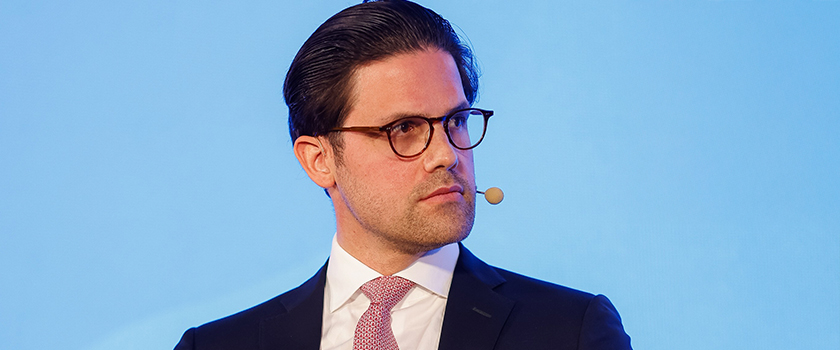Institutional Money (10.11.2020) - Traditional financial theory posits that investors in balanced portfolios, typically weighted 60/40 in favour of equities, would expect to realise capital gains and growth from their equity allocation, whereas their fixed income allocation would offer income and protection.
Over the past thirty years, this has been an effective investment strategy with both of these asset classes delivering on this premise. Looking ahead though, the outlook appears much more nuanced, particularly for fixed income.
As global growth has structurally slowed for a variety of productivity, technological and demographic reasons, interest rates have decreased consistently. Today, interest rates across developed countries are at their effective lower bound implying a zero or negative income stream from safe-haven fixed income investments. Similarly, potential capital gains on fixed income, an upside surprise investors experienced over the past three decades, appear limited given the reluctance of central banks to cut interest rates any further.
Protection from high-quality fixed income assets may also be set to diminish. In each of the past economic crises from LTCM in 1998 to Covid-19 in March this year, safe-haven fixed income assets have helped buffer losses in balanced portfolios by returning positive performance when equity investments have suffered. With interest rates at their effective lower bound today, there are obvious limitations on how much protection high-quality bonds can offer.
Given this backdrop, investors looking to optimise their portfolios should consider switching into absolute-return fixed income strategies. By their very nature, absolute-return strategies begin from a blank page and are therefore unconstrained in their asset (eg. government, investment-grade or high-yield bonds), sector, country and/or maturity selection. This enables an active portfolio manager to choose the instruments they find most attractive given the macroeconomic environment and ultimately deliver value for the investor.
Crucially, not all absolute-return fixed income strategies are created equal. Some may deliver large returns but with heightened volatility, whereas others will be more defensive, offering a regular return stream and limited drawdowns. Sharpe ratios, a mathematical equation that shows return earned per unit of risk taken, can help differentiate between these funds. If the Sharpe ratio is below 1, irrespective of the absolute performance of the fund, investors are not being rewarded for the risk they are taking.
For all of its negatives, 2020 has been a good test for absolute-return fixed income strategies. By analysing fund volatility and subsequently the Sharpe ratios on different absolute-return strategies, investors will be able to isolate those funds that have delivered on their return targets without running excessive amounts of risk, and those that have not.
In conclusion, although much has been made of the recent fall in interest rates, in reality the decline in yields has been occurring for decades. Today we find ourselves at the effective lower bound and as a result, previous rationales for investing in fixed income benchmarks, such as earning an income stream, may have reached their limitations. Fixed income remains a cornerstone of any investor’s portfolio given its lower volatility and ability to preserve capital. Investors positioning for the future should look to absolute-return fixed income strategies with high Sharpe ratios to deliver value in the years ahead.

Philippe Gräub
Head of the Global & Absolute Return Fixed Income team

Bernard McGrath
Investment Specialist








